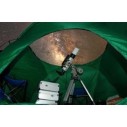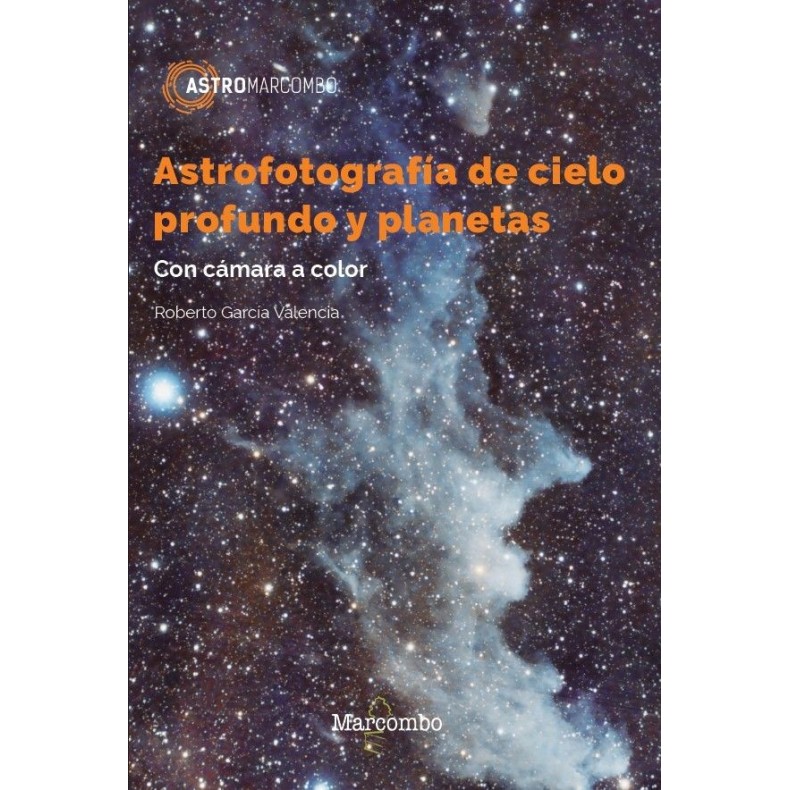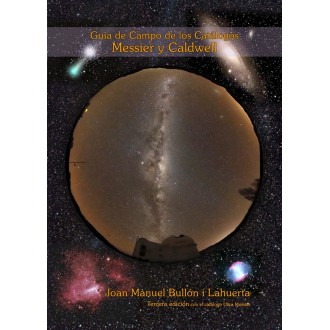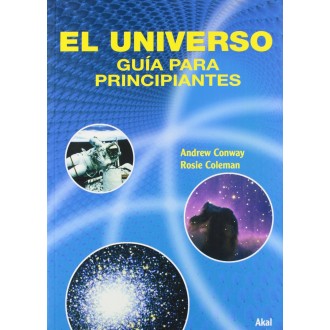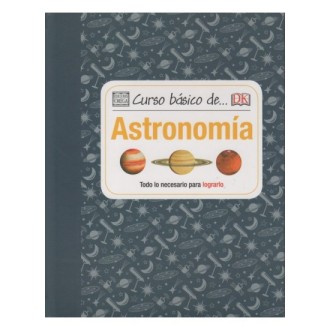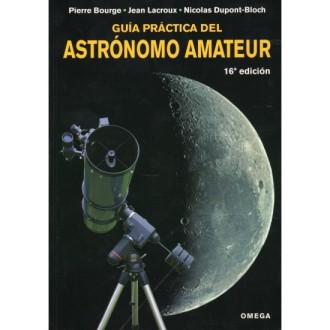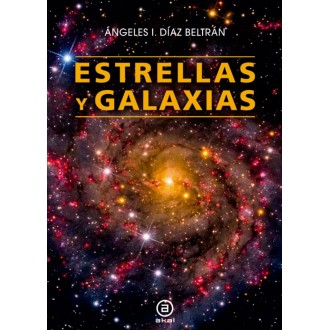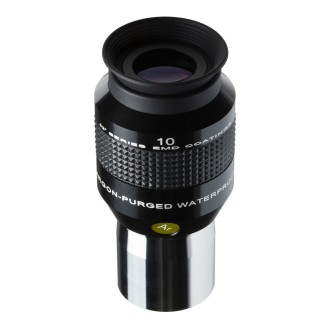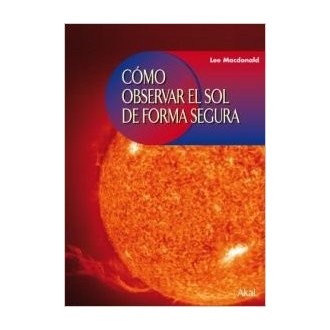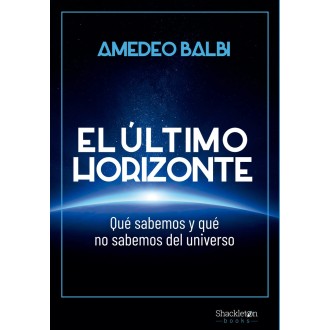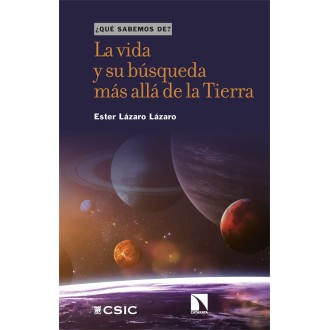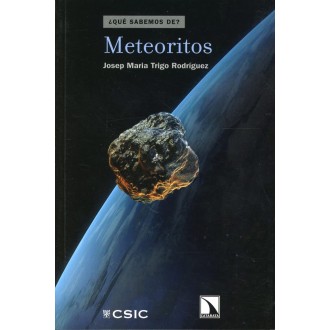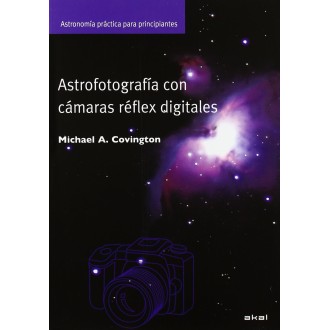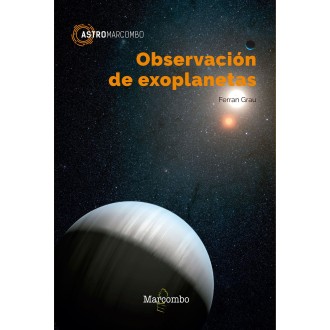Book Astrophotography of deep sky and planets
Astrophotography is a growing discipline. More and more people are taking up this fantastic hobby with a simple SLR camera or purchasing a dedicated astrophotography camera. Even if you start photographing with few resources, it is possible to have spectacular results almost from the beginning.
In astrophotography it is not enough to know how to acquire images. If we also master the processing of those images, we will obtain a more beautiful, artistic and respectful final result with what we have photographed.
In Astrophotography of deep sky and planets you will find everything you need to get started and learn this technique from scratch. This book is a versatile and essential tool both for someone who intends to get into astrophotography and for those who want to delve deeper into it. It covers from scratch the understanding and handling of a camera, the use of various types of telescopes, the different computer processing and each of the techniques used to photograph the objects that we can find in the black background of the night. Everything is explained in a practical and simple way. When you finish the book and execute its contents, you will even be able to provide information for professional science studies.
Roberto García Valencia (Pamplona 1974). He works at the Pamplona Planetarium, where he disseminates astronomy and carries out projects such as the interpretation of constellations, relative and absolute photometry of stars with reflex cameras, and the transmission of knowledge and awareness against light pollution. He is the author of a large part of the astrophotography collection housed in the Pamplona Planetarium. A fan of science and astronomy since he was a teenager, and with 20 years of experience in astrophotography, he began photographing with an analog reflex camera (film) and currently works with a dedicated camera, but almost always does color astrophotography. He also collaborates regularly in the outreach work of the Guirguillano Astronomical Observatory.
Table of contents:
- Foreword IX
- Particular impressions
- 1 1. Introduction 3
- 2. What a camera looks like 7
- 2.1. Main foundation of a camera007 2
- 2.2. Types of cameras ......................... 8
- 2.2.1. Cell phones, compact cameras and bridges .............8
- 2.2.2. EVIL and SLR cameras ..........................10
- 2.3. Sensors and lenses ....................... 13
- 2.3.1. Sensors ........................ 13
- 2.3.2. Lenses (lenses) ................ 19
- 2.4. Exposure time, aperture and ISO ............................. 21
- 2.4.1. Exposure time ....... 21
- 2.4.2. Aperture aperture .....22
- 2.4.3. ISO sensitivity ..................24
- 2.5. Types of files stored by the camera ............... 25
- 2.6. Cameras dedicated to astrophotography .....................25
- 2.6.1. CCD and CMOS cameras .......26 6.2
- 2.6.2. Cooled cameras ........28
- 2.6.3. Binning ...................................29
- 3. Equipment needed for astrophotography 31
- 3.1. Equipment to make the night more pleasant ...........31
- 3.2. Technical equipment ..........................31
- 4. Cameras, mounts, telescope and guidance 35
- 4.1. Cameras without IR filters ...................35
- 4.2. Interesting filters for astrophotography ...................36
- 4.3. Types of mounts .....................38
- 4.4. Types of telescopes ..................40
- 4.4.1. Refracting telescope ...........44
- 4.4.2. Reflecting telescope ...........46
- 4.4.3. Catadioptric Telescopes ...................... 49
- 4.5. Guidance modes .......................50
- 4.5.1. Visual guiding ........................52
- 4.5.2. Automatic guidance. Tube, camera and software ...52
- 5. We go out to shoot 55 5.1. Before we go out, we prepare the session ...............55
- 5.2. Setting up the equipment, counterbalancing and setting up the station ....................................59
- 5.3. Photo shoot without a computer ..............................62
- 5.3.1. Focusing .............................64
- 5.3.2. Framing ...............................65
- 5.3.3. Beginning the session ........65
- 5.4. Photo session with a computer and a guide camera ......................................65
- 5.4.1. Necessary software and other utensils .................66
- 5.4.2. Focusing .................................70
- 5.4.3. Framing ...............................71
- 5.4.4. Programming the sequence of shots ...........72
- 5.4.5. Starting with guiding ........................74
- 5.4.6. We start with the sequence ..................74
- 5.5. Image defects ........ 75
- 5.6. Shots to remove the defects of the image ...............80
- 5.6.1. Dark shots (dark) .........80
- 5.6.2. Flats (flats) shots ............82
- 5.6.3. Bias current shots ......... 85
- 5.6.4. Aircraft and satellite traces ...............................86
- 5.6.5. Conclusions ........................86
- 6. Processing 89
- 6.1. Preprocessing with DSS .............89
- 6.2. Processing with PixInsight .........92
- 6.2.1. Linear image processing ........................ 93
- 6.2.2. Non-linear image processing .................. 96
- 7. Planetary Astrophotography 105
- 7.planetary astrophotography equipment .....108 2
- 7.video acquisition software ............. 109 3
- 7.3. We do planetary photography ...................................109
- 7.4. Processing of a planetary image ................... 110
- 8. Conclusion 115
- Gallery 119
- Bibliography and references 135
- Annex 1 137
Technical data sheet:
- Author: Roberto García Valencia
- Publisher: MARCOMBO, S.A.
- ISBN: 9788426733610
- Publication date: 8/02/2022
- Cover: soft
- Format: 15.5x23 cms
- Pages: 160
- Edition: 1st
Book Astrophotography of deep sky and planets
